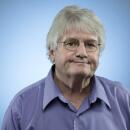Bowling Over Competition and the Odds
- Share via
They have defying the statistics down to a science at Venice High School.
Which explains how teenagers from a neighborhood caught in the middle of burgeoning gang violence--and from a state whose youngsters are known for lagging science skills--were being hailed Tuesday as winners of the National Science Bowl.
Again.
A five-member team of science scholars returned to the Mar Vista-area campus after beating 45 other high schools for the national championship at Chevy Chase, Md. It was the second victory in a row for Venice High students.
Not bad for a school that lies between communities of Latino and black gang members whose rivalry has periodically produced some of Los Angeles’ worst explosions of retaliatory shooting.
And not bad for a state whose eighth-graders recently earned the equivalent of a D--worse than 65% of their peers in the rest of the country--on a tough new test of science knowledge.
“Venice’s reputation until recently has been poor,” acknowledged science team member Matt Nickens, 17, a 12th-grader from Westchester. “People will ask, ‘Where do you keep your gun? In your locker?’ But this is really turning around the look of this school.”
Indeed, the most prominent thing outside Venice High on Tuesday was the huge, blue-and-white “Home of National Science Bowl Champions” sign bolted to the campus marquee.
It was put there to honor last year’s winning team. But it will stay, said Principal Bud Jacobs.
“California gets a D in science, but the top schools in science in the nation are here,” he said, referring to the report released Friday that showed California students ranked 39th out of 44 states and territories where the difficult new science achievement test was given.
“The community here is very diverse. In no way is any kid here sheltered from the real world,” Jacobs said. “But this area is rich in a lot of ways. Intellectually, too.”
Science squad members used a homemade “Jeopardy”-style buzzer system during each noontime lunch hour to practice for this week’s national competition, said Ryan Young, 16, a senior from Mar Vista.
Young and the others would race to be first to press the buzzer button as team coach Richard Erdman, a Venice High biology teacher for 27 years, tossed them questions.
Because of last year’s victory and Venice’s regional science contest wins in four of the five years that Southern California teams have competed, opponents in Maryland were gunning for them this time, according to team member Adam Ferrell, a 17-year-old junior from Marina del Rey.
So the Venice team worked at getting the jump on opponents with the answer button--just as squad members had done at lunchtime in Erdman’s biology classroom.
“We tried to buzz in early as soon as you heard what they were asking,” said senior David Dickinson, 17, of Culver City.
That technique wasn’t foolproof.
In the second-to-last game, senior Dickinson challenged judges when he shouted out what appeared to be an incorrect answer--”black dwarf”--before the moderator finished reading this question: “At the end of its life, the sun will become: a white dwarf, a neutron star, a black hole, a pulsar.”
“It was essentially the same question I’d heard during an earlier round with Arcadia High [which had beaten Venice in an earlier double-elimination match]. I’d read up on it in an astronomy book during the break. I tried to explain,” Dickinson said.
Pulling the book from his backpack, Dickinson marched off the platform to confront officials.
Teammate Noah Bray-Ali took up the story from there.
“Hilarity ensued,” said Bray-Ali, a 16-year-old senior from Mar Vista. “An astronomer in the crowd jumped out and started yelling. The audience erupted into a cacophony.”
Although “black dwarf” turned out to be just as correct as “white dwarf,” the rules required an answer from the multiple-choice list.
For winning the Department of Energy-sponsored national competition, the Venice High students will receive a free two-week trip this summer to study at the International School of Physics at the University of Sydney in Australia. For winning the local regional contest sponsored by the Los Angeles Department of Water and Power, they each additionally received $800 in college scholarships given by Hitachi.
That will come in handy. Dickinson and Bray-Ali are headed for the Massachusetts Institute of Technology. Young plans to attend UC Berkeley. Nickens is Princeton-bound. And 11th-grader Ferrell isn’t sure where he will go--although he plans to study theoretical cosmology, about the origin of the universe.
More to Read
Sign up for Essential California
The most important California stories and recommendations in your inbox every morning.
You may occasionally receive promotional content from the Los Angeles Times.











